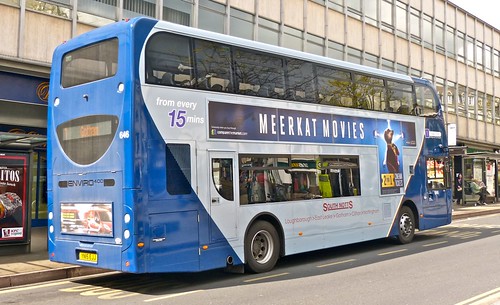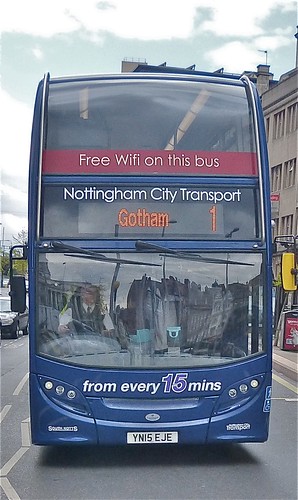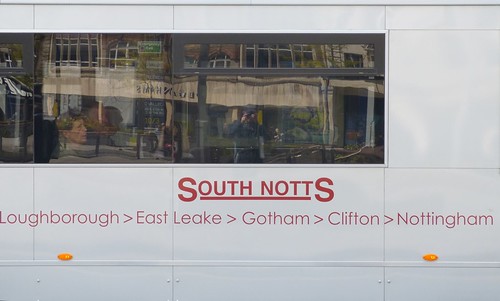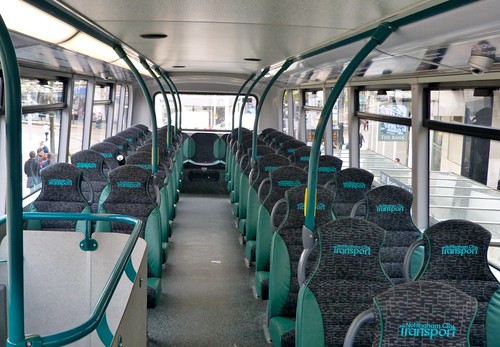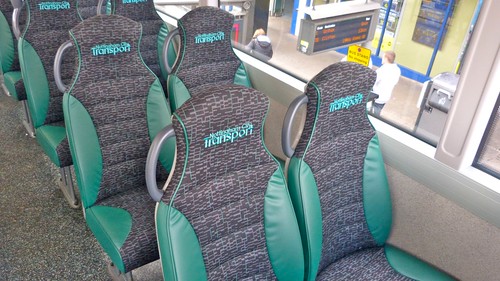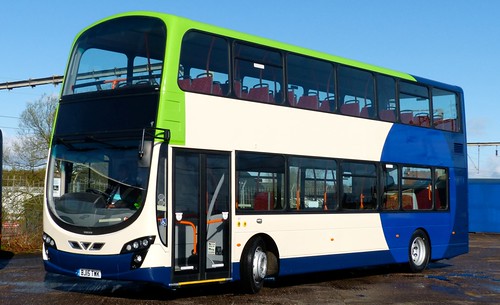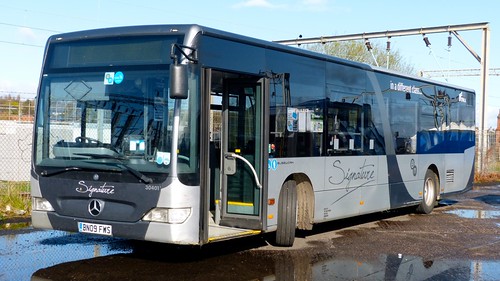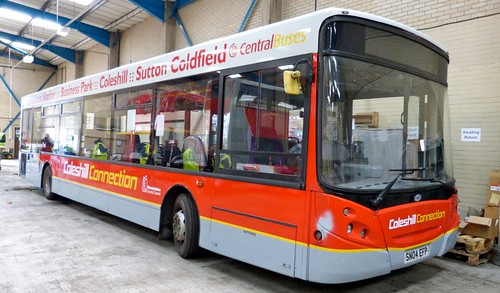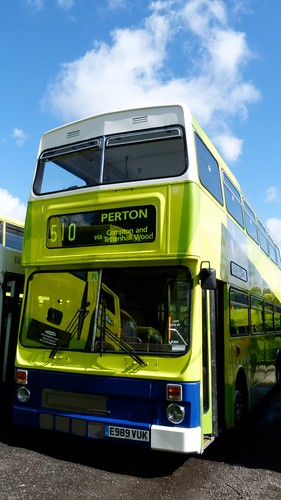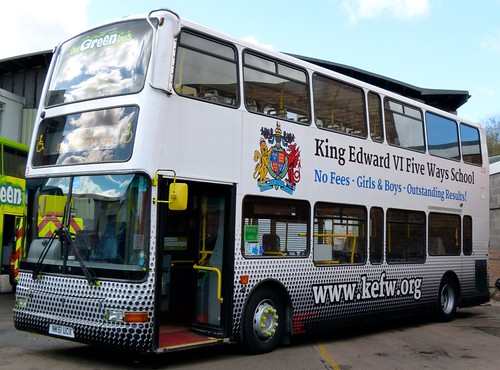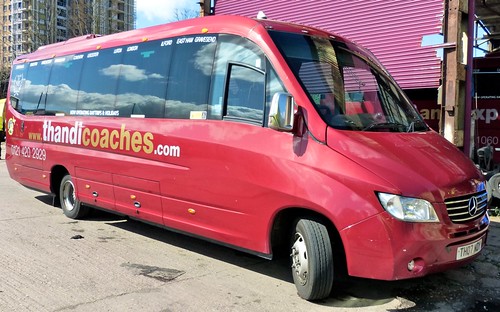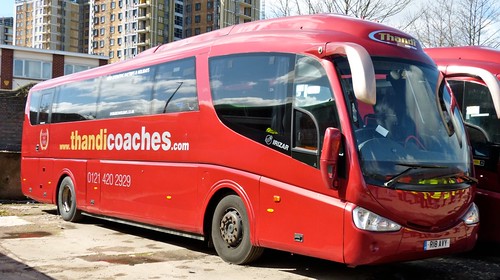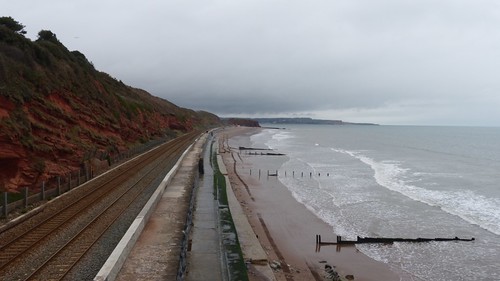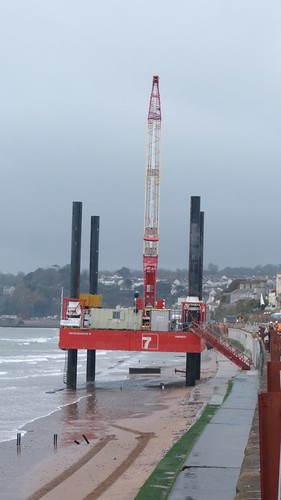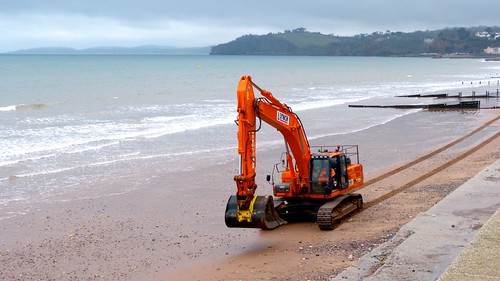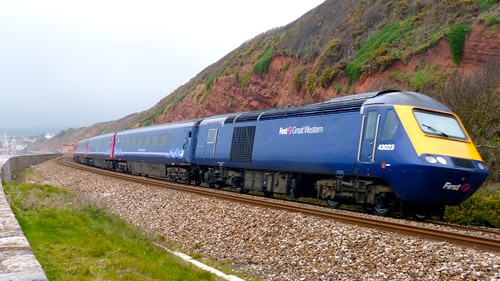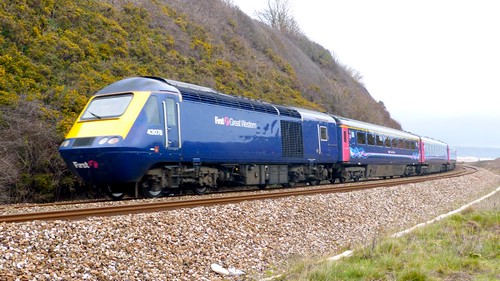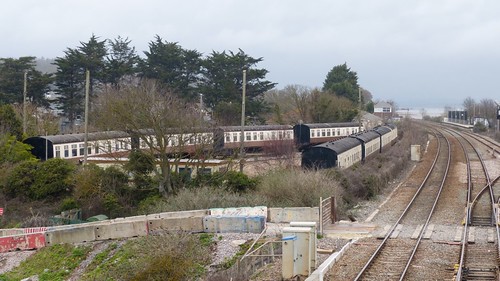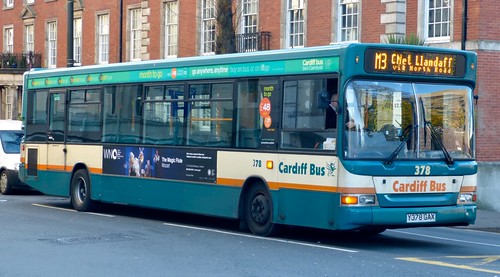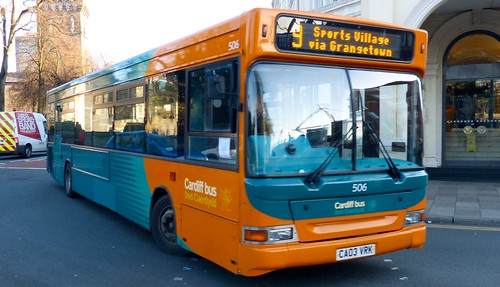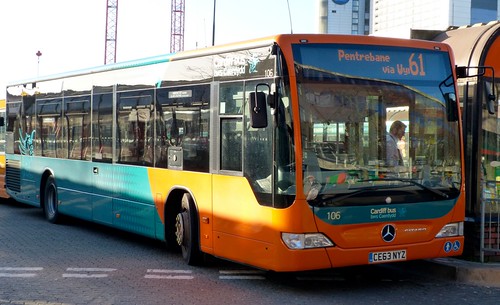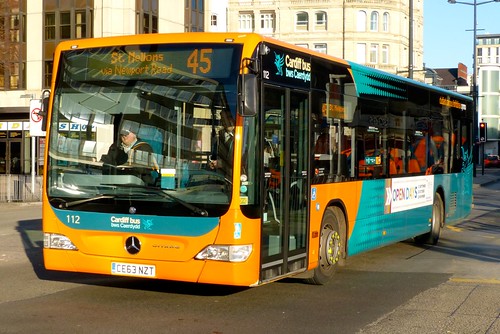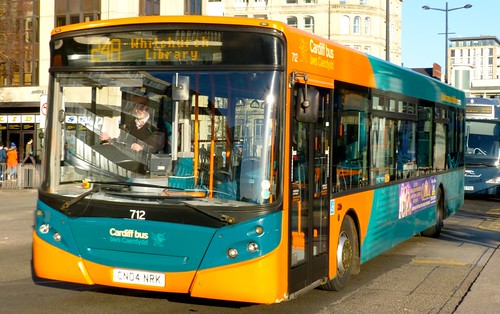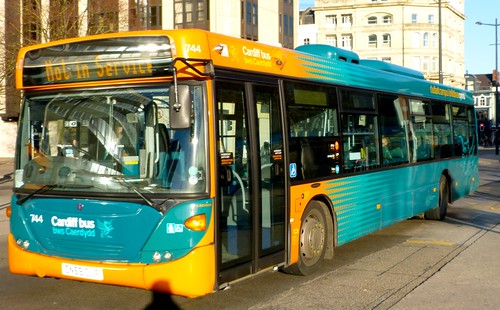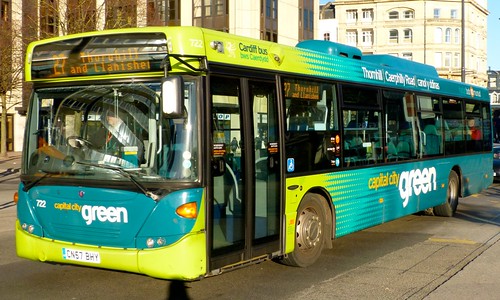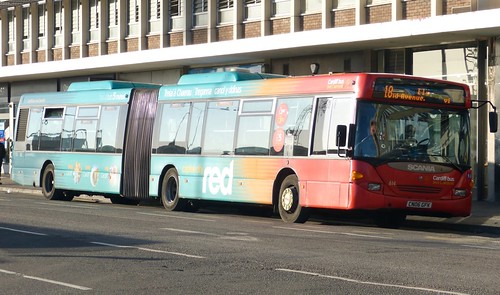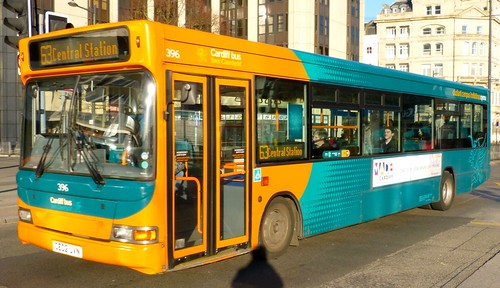G-AKIF
It is perhaps hard to believe in these days of Jumbo Jets and the like that this fragile looking, fixed undercarriage, biplane 9 seater was ever an airliner, but it was.
The de Havilland DH89A Dragon Rapide designed in 1930’s was widely used by civil airlines in the mid to late years of the decade.
At the start of World War Two (WW2) many were impressed into the Royal Air Force (RAF) as the DH Dominie and in addition a further 500 plus were built to serve in the transport, liason and training roles. The final tally was 731 aircraft built.
Many former military aircraft joined the civil register, G-AKIF being one of them. Built in 1944 with the military serial of NR750, apart from its British registration it also worked in Norway as LN-BEZ.
It currently works on air taxi and pleasure flight work.
Not bad for a 70 year old....!

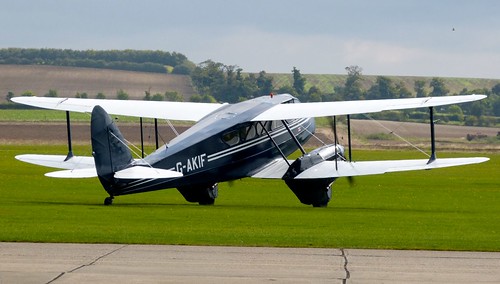
G-ANTK
An Avro 685 York. Derived from the more famous Avro Lancaster of ‘Dambuster’s fame. It used the Lancaster’s wings, engines, undercarriage and tailplane married to a new virtually square cross sectioned fuselage to provide the ‘RAF’ with a passenger and freight transport.
After ‘WW2’ ended, many were sold onto the civilian market. G-ANTK having previously been registered with the military serial MW232.
Built at Yeadon (Leeds) by A.V. Roe in1945, it served with No.s 242 and 511squadrons. It flew with the latter on the Berlin Airlift.
It became G-ANTK in 1954 when it was sold to ‘Dan-Air’ (DA) with whom it worked as a freighter for 10 years.
After retirement, it served at Lasham, Dan-Air’s engineering base in Hampshire as a bunkhouse for the local ‘Air Scouts’ group.
The ‘Dan-Air Preservation Group’ had intended preserving the aircraft itself but realised the size of the task and after some negotiation the aircraft was delivered to ‘The Duxford Aviation Society’ (TDAS) by road in May 1986.
20 years later saw it restored to the condition it is seen in today.
A fitting tribute to the people at the ‘TDAS’ without whom it would never have happened.
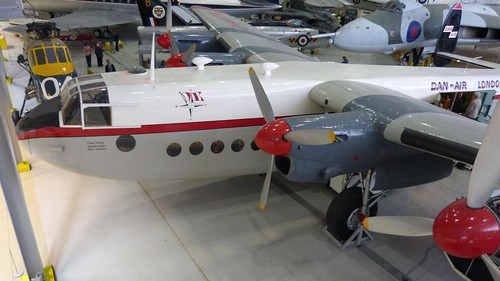
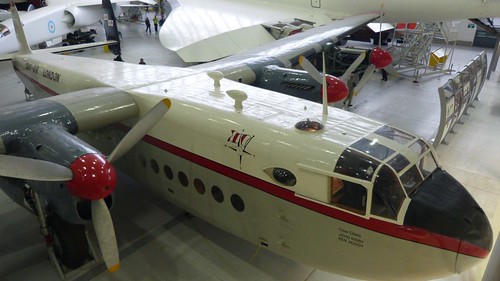
G-ALDG
After ‘WW2’ Avro moved on to develop and build the ‘Tudor’ whist one of Britain’s other heavy bomber builders, Handley Page. Developed the Hermes.
Similar in concept to the Tudor, a four engined airliner, it was built primarily for ‘British Overseas Airways Corporation’ (BOAC).
Again, like the Tudor it was not a major success with only 29 built.
To be fair to the British manufacturers, they found it difficult to compete with the American aviation industry who could and did build aircraft like the Lockheed Constellation and the DC-4/6/7 series by the hundred.

G-ALZO
An Airspeed Ambassador seen in the colours of Dan-Air.
The only survivor of the 23 built, all for British European Airways (BEA). Delivered in 1952, it served until 1958 when after 2 years in storage, it was sold to The Royal Jordanian Air Force as a VIP and general transport.
Bought by ‘DA’ in 1963. Its last commercial flight was on the 2nd. of October 1971.
Stored at Lasham, it was donated to’TDAS’ in 1986 who transported it by road to Duxford for restoration.

G-ALWF
A Vickers Viscount V 701 Viscount. It is the oldest surviving Viscount in existence dating from 1952 and it is seen in the then livery of ‘BEA’.
The second production aircraft, constructors number 5 it was sold to ‘Channel Airways’ in March 1963 who leased it to ‘Tradair’ and then to ‘British Eagle’ before selling it in December 1965 to ‘Cambrian Airways’.
Its last service for them was on Christmas Eve 1971 when it flew a return schedule from Cardiff to Belfast. Its final flight was to Liverpool in April 1972 where it was to be preserved.
However, its future appeared to be in doubt and as they had done before,‘TDAS’ stepped in and after much work spent dismantling the aircraft it eventually arrived at Duxford in February 1976.

G-APDB
A De Havilland Comet 4B seen in ‘BOAC’ livery.
The second of 19 built for the airline, at Hatfield it was delivered to them in September 1958. On the 4th. of October it operated the first Eastbound jet powered service ever from New York to London beating ‘Pan American’s Boeing 707 operated service by 22 days.
Sold in September 1965 to Malaysia-Singapore Airlines as 9M-AOB it eventually came back to ‘DA’ in 1969.
It flew on ‘DA’s inclusive tours holiday flights until November 1973 when its last flight was from Alicante to Tees-side airport.
It was decided to preserve the aircraft which had the highest number of hours (32,269) flown of any Comet.
Initially by the ‘East Anglian Aviation Society’ at Duxford, the aircraft passed to ‘TDAS” when that group was founded in 1975.
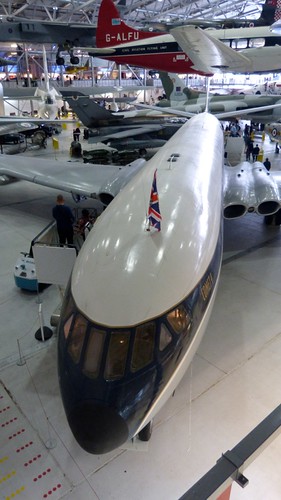
G-AOVT
A Bristol Britannia 312 wearing the livery of ‘Monarch Airlines’ (MA). Powered by Bristol’s Proteus engines it was nicknamed the ‘Whispering Giant’ because they were so quiet in operation
The model 312 was developed from the earlier model 102 which was shorter and only found one customer from new which was ‘BOAC’.
‘VT was the last of BOAC’s fleet of 312’s delivered to the airline in January 1959 and flew worldwide with the airline until September 1963 when it moved to ‘British Eagle International Airlines’ with whom it worked until the airline ceased operations in November 1968 at which time it was acquired by ‘MA’.
It ceased operating in passenger configuration with ‘MA’ in October 1974 when it was converted to a freighter for operation by ‘Invicta Airlines’.
Stored from March 1975 it was donated to ‘TDAS’ and was flown to Duxford on the 29th. of July 1975.
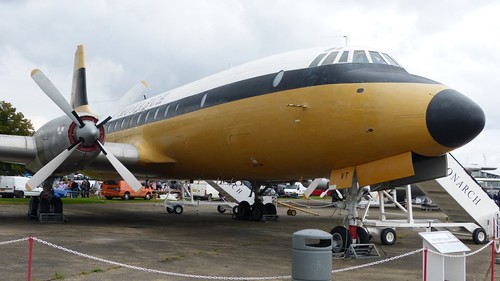
G-APWJ
A Handley Page HPR7 Dart Herald built at Radlett which first flew in May 1963. Originally ordered by ‘Transair’ but delivered to ‘British United (Channel Islands) Airways’.
In 1980 it moved to ‘Air Anglia’ and it was with this company that it flew its last service in July 1985. It was also the last scheduled service flight by any Herald, anywhere.
Retired, it was donated to ‘TDAS’ and arrived at Duxford on 7th. July 1985.
At the time of the photo, it stood engineless and tailless but with ‘TDAS’ record I have every faith that like so many more aircraft in their hands it will soon be restored to good health.
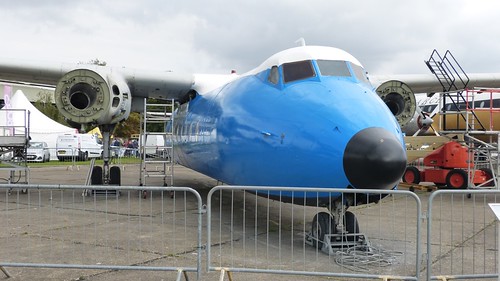
G-ASGC
A Vickers (BAC) Super VC-10 series 1151 built for the ‘British Oversea Airways Corporation’ (BOAC). It first flew on New Years Day in 1965 and was officially delivered to ‘BOAC’ in March of the same year.
From 1962 to 1866 ‘BOAC’ entered an agreement with the ‘Cunard Steamship Company’ re services on the North Atlantic which saw ‘SGC’ carry ‘BOAC Cunard’ titling.
‘BOAC’ became part of ‘British Airways’ (BA) in 1972 and with the coming of the Boeing 747, the VC-10’s were moved to less important routes.
‘SGC ended its service days flying European services and made its last revenue earning flight from Amsterdam to London on the 22nd. of October 1979. It was stored from then until April 1980 when it was flown to Duxford for onward preservation by ‘TDAS’.
The ‘BA’ titling was removed in 1987/8 and the ‘BOAC-Cunard’ livery and titles were re applied.

G-AVMU
A BAC One Eleven 510ED.
It was built for ‘British European Airways Corporation’ (BEAC) and delivered to the airline in March 1969. From then until withdrawal and storage at Hurn in October 1992 it flew on mainly UK internal services and to Ireland and Germany. For a time, the One Eleven fleet were based at Manchester.
It became part of ‘TDAS’ collection at that time and was flown to Duxford in March 1993.

G-AVFB
A Hawker Siddeley Trident 2E displayed in the livery of ‘BEA’.
A longer range variant of the basic design, powered by Rolls-Royce Spey 511 engines. ‘BEA’ bought 15 of the model. Others were bought by ‘Cyprus Airways’ (CA) who took 2 and ‘CAAC’ from China took 33.
G-AVFB first flew in November 1967 and was delivered in June of the same year. Withdrawn in 1973 and leased to ’CA’ as 5B-DAC, it was damaged in the Turkish invasion of the island in 1974
Returned to the UK and ‘BEA’ service in 1977 it continued in service until 1982 when it was finally withdrawn and delivered to Duxford.
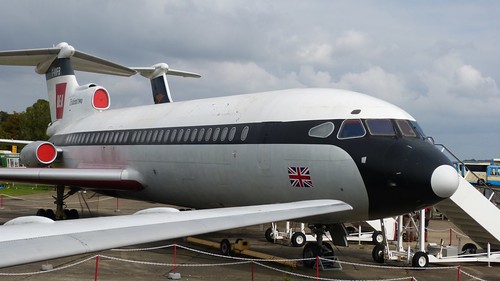
G-AXDN
A BAC Concorde. Built as a pre production development aircraft it first flew in December 1971 from Filton (Bristol).
After a relatively short life it was withdrawn and delivered to Duxford in August 1977 having made 269 flights of which 168 were at supersonic speeds.
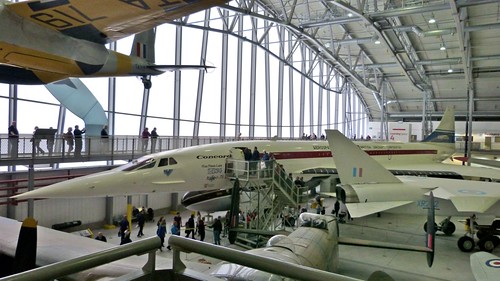
It will be apparent that without the efforts of ‘The Duxford Aviation Society’, that a very large percentage of the civil airliners currently restored at Duxford would cease to exist.
They do a magnificent job but equally it must also be apparent that many of these aircraft are stored in the open.
Time and weather will eventually do serious damage. Also the members of ‘TDAS’ are all getting older.
We should as a nation be prepared to provide secure indoor accommodation for these aircraft for without it we will eventually lose a major part of Britain’s aviation heritage.


